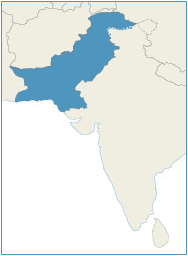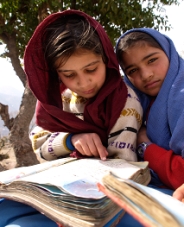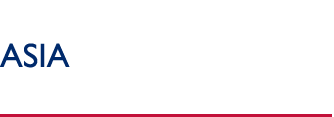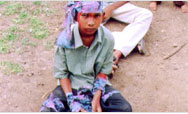 |
|
 |
 |
 |
| USAID Information:
External Links:
|
|
 |
 |
|
 |
 |
|
 |
 |
|
Pakistan

SNAPSHOT
Date of independence: 1947
Population: 165.4 million (2007)
Income per person: $770 (yr)
Source: World Development Indicators 2007 USAID/PAKISTAN SITE
www.usaid.gov/pk
CONTACTS
Mission Director
Anne Aarnes
USAID/Pakistan
Tel: 92-51-208-2795
Officer-In-Charge
Lawrence W. Dolan, Ph.D.
Tel: (202) 712-1063
Email: Ldolan@usaid.gov

USAID Education programs promote student learning in some of Pakistan’s most remote regions by training teachers in participatory learning, increasing parental involvement, and supporting infrastructural improvements for schools. (Photo: Masako Imaoka/On Asia)
IMPACT AT A GLANCE
• From 2002 to 2007, approximately 42 percent of government primary
school teachers in two underserved regions were trained in improved
teaching skills.
• The TB case detection rate increased from 28 percent (2003) to
70 percent (2007).
• USAID’s work rebuilding livelihoods has contributed to a 45 percent
overall rise in agriculture income in the earthquake-affected regions.
Overview
The goal of U.S. assistance to Pakistan is to tangibly improve the lives of the poor in Pakistan and to build support for Pakistan’s decision to join the international war on terrorism and thwart further terrorist recruiting. The U.S. government re-opened the USAID mission in Islamabad in 2002. From 2002 through 2007, USAID provided nearly $2.4 billion (including Emergency Economic Assistance) to address needs in education, health, economic growth, and good governance, as well as earthquake reconstruction assistance.
Programs
Investing In People: Education
Approximately 79 percent of Pakistani children between the ages of 10 and 16 are out of school. Nearly half the adult population is illiterate – with 42 percent of Pakistani women unable to read. USAID’s education programs educate teachers, provide input on education policy reforms, improve enrollment, provide facilities in schools, and equip illiterate parents and siblings with basic literacy skills. USAID provides scholarships to thousands of needy and talented students to complete degrees in Pakistan. USAID’s Fulbright program – the largest in the world – is enabling 750 students to study in the United States. In the underserved areas of Balochistan and Sindh, USAID has trained 42 percent of government primary school teachers in improved teaching skills between 2002 and 2007. In the Federally Administered Tribal Areas (FATA), USAID has refurbished 58 schools that will benefit 16,000 students each year, and two government colleges of education that can train 250 prospective and in-service teachers annually.
Investing In People: Health
Pakistan's health indicators are among the worst in the world, and communicable diseases remain a serious concern. USAID programs help to decrease the incidence of tuberculosis (TB), eradicate polio, and reach communities vulnerable to HIV/AIDS. In FATA, vaccination coverage has increased from 30 percent to 41 percent since 2003. With USAID support, the TB case detection rate in Pakistan increased from 28 percent in 2003 to 70 percent in 2007. During the same period, the treatment success rate rose from 70 percent to 85 percent.
Economic Growth: Creating Opportunities
Continued, broad-based economic progress is essential to maintain and enhance Pakistan’s political and economic stability. Through 2008, a nationwide USAID-supported program is working to change banking practices to reach the many small businesses that are too big for micro-credit but too small for conventional loans. Over 65,000 loans were issued between January and September 2008. USAID also increased small and medium business participation in the policy reform process by establishing working groups in six industrial sectors.
In Balochistan, USAID taught population agricultural techniques that enabled over 119,000 people to increase their incomes by an average of 23 percent. USAID will help Pakistan address crises in energy, food insecurity, and the balance of payments through substantial expansion in assistance.
Governing Justly and Democratically
Accountable governance involving citizens’ input can make development initiatives more effective. USAID helps strengthen Pakistan’s national and provincial assemblies with technical assistance, training, and resource centers. USAID also supports local governments by enhancing their ability to deliver better public services. In addition, USAID helps Pakistan’s Election Commission oversee and carry out free and credible national elections. In the 2008 general elections, USAID trained and deployed nearly 20,000 domestic election monitors, reaching approximately 30 percent of all polling stations.
Humanitarian Assistance: Earthquake Reconstruction
The October 2005 earthquake caused massive loss of life and damage in Pakistan’s North-West Frontier Province and Azad Jammu and Kashmir. Following its relief efforts, USAID has now transitioned to a recovery and reconstruction program. The program rebuilds schools and health facilities, trains public health workers and district government education officials, and restores and improves livelihoods. USAID’s work rebuilding livelihoods has contributed to a 45 percent rise in agriculture income in the regions affected by the 2005 earthquake and following the magnitude 6.4 earthquake in Balochistan in October 2008, USAID provided $2.5 million for emergency health care, shelter, relief commodities, and water and sanitation.
Non-Project Assistance
From 2002 to 2007, the U.S. government’s Emergency Economic Assistance Agreements provided balance of payments, budget, and policy reform support to the Government of Pakistan during a time of economic hardship and political strain associated with Pakistan’s participation in the Global War on Terror. Since 2008, these funds have been added to USAID-managed development programs that directly improve the health, education, and economic opportunities of Pakistanis.
Back to Top ^
|




